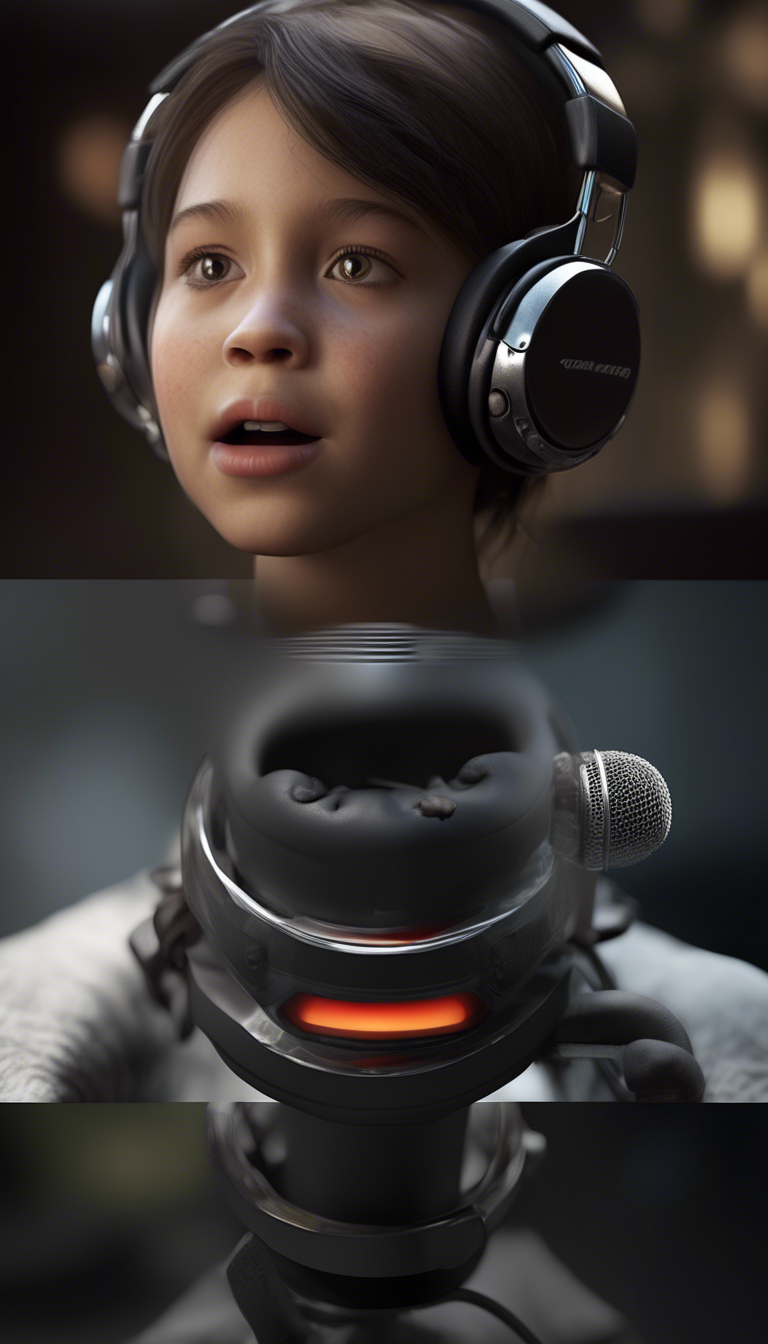Practical Applications and Benefits of Voice Input Examples in Daily Life
The Future of Voice Technology: Trends and Innovations
As voice technology continues to evolve, its applications become increasingly diverse and integral to our daily lives. From virtual assistants to smart home devices, advancements in this field promise to reshape how we interact with technology. Innovations in voice input, in particular, are paving the way for richer, more efficient user experiences. Here, we delve into trends and innovations that are defining the future of voice technology.
The Rise of Natural Language Processing (NLP)
Natural Language Processing has seen groundbreaking improvements, allowing devices to understand and interpret human speech more accurately. With better algorithms and vast datasets, systems can now process various dialects, accents, and even emotional tones. This creates an intuitive user experience, as users can interact with technology using their natural speech patterns. For example:
- Multi-Lingual Understanding: Devices can now respond in multiple languages, enhancing accessibility for global users.
- Enhanced Contextual Awareness: Advanced NLP systems remember previous interactions, allowing for more contextualized responses in future conversations.
Integration with AI and Machine Learning
The seamless integration of voice technology with Artificial Intelligence (AI) and Machine Learning is revolutionizing the field. AI algorithms learn from user interactions, continuously improving the personalization and accuracy of responses. This innovation ensures that:
- Voice Assistants are Smarter: They can anticipate user needs based on past behavior, making suggestions that feel almost like a human touch.
- User Preferences are Honored: These systems customize responses, providing information that matches what users have shown interest in.
Voice Commerce on the Rise
Voice commerce is gaining traction as more consumers opt for hands-free shopping experiences. The convenience of placing orders via voice commands has made it a preferred method for many busy individuals. With this trend, ecommerce companies are enhancing their platforms to support:
- Voice-Activated Ordering: Users can say what they want to buy, and their virtual assistant processes the order automatically.
- Personalized Shopping Experiences: By understanding user preferences, voice technology tailors recommendations, leading to higher conversion rates.
Advancements in Voice Recognition Technology
Impressive strides in voice recognition technology are making devices more responsive and reliable. Improved accuracy in recognizing individual voices is a core focus, resulting in:
- Personal User Profiles: Devices can distinguish between different users, providing tailored responses based on their unique profiles.
- Enhanced Security Features: Voice recognition can bolster security protocols, allowing only authorized users to access sensitive information.
Voice Integration in Smart Home Ecosystems
As smart homes become more prevalent, voice technology acts as a central hub for managing devices. Home automation systems now allow users to control lights, thermostats, and appliances through voice commands, enabling:
- Unified Control: Users can manage multiple devices from different manufacturers through a single voice command platform.
- Automation of Daily Tasks: Voice technology can schedule cleaning, adjust temperatures, and even prepare coffee with just a few words.
Accessibility and Inclusivity Improvements
The focus on accessibility is vital for the evolution of voice technology. Enhanced features are being implemented to cater to users with disabilities, providing:
- Voice Commands for the Visually Impaired: Users can navigate apps and devices without needing to see the screen.
- Simple Interfaces for the Elderly: Voice technology allows older adults to use devices without needing advanced technical skills.
The future of voice technology looks promising, with rapid advancements poised to shape its landscape. As innovation continues to streamline voice input and enhance user experiences, the versatility and accessibility of voice technology will make it more ingrained in our everyday lives than ever before. By adapting to user needs and embracing new capabilities, voice technology is not just a trend but the future of interaction in a digital world.
Conclusion
Voice input technology is rapidly transforming the way we interact with our devices, seamlessly integrating into our daily routines and reshaping various industries. As we’ve explored throughout this article, practical applications and the benefits of voice input examples in daily life are myriad. From making our daily tasks easier to enhancing communication options for those with disabilities, voice technology presents a multitude of advantages that can enhance productivity and streamline workflows.
In our everyday activities, voice input provides unparalleled convenience. Whether you’re using voice commands to set reminders, manage your calendar, or control smart home devices, the time saved is significant. Imagine rushing out the door in the morning and having to remember your grocery list; instead, a quick vocal prompt to your assistant can handle that for you while you tend to other matters. Furthermore, users report that voice input helps reduce cognitive load, allowing them to multitask efficiently without becoming overwhelmed.
For those in workplaces that require hands-free operation, such as construction sites or healthcare settings, voice recognition can be a game changer. Professionals can input data or access information while fully engaged in their tasks, thereby improving safety and efficiency. This hands-free capability not only keeps people safe but can also lead to faster turnaround times and improved quality of service across various trades. In educational environments, teachers can even utilize voice commands for managing attendance or controlling presentations, facilitating smoother class dynamics and keeping students engaged.
The future of voice technology holds even more promise as it continues to evolve, marked by exciting trends and innovations. The integration of artificial intelligence (AI) into voice recognition systems is set to create more personalized and responsive interactions. As AI capabilities grow, voice input will evolve beyond recognizing commands to understanding context and nuance. Imagine a future where your voice assistant remembers your preferences and anticipates your needs, making your day-to-day experiences even more seamless.
Moreover, innovations like multilingual voice recognition and improved speech recognition algorithms open doors to inclusivity. This progress not only benefits diverse populations but can facilitate global communication, allowing different language speakers to interact effortlessly. Increased emphasis on natural language processing (NLP) will enable these systems to interpret human speech more accurately, understanding colloquialisms and emotional tone, which can lead to richer interactions.
Security also emerges as a primary focus for future development. As voice technology becomes more commonplace, concerns regarding privacy and unauthorized access will necessitate advancements in security systems. Companies are likely to innovate more robust authentication methods, ensuring that voice-input technology is safe and secure. Biometric identification through voice can transform personal security, making transactions and device access more streamlined and reliable.
Furthermore, as we delve deeper into the Internet of Things (IoT), the functionality of voice assistants is bound to increase exponentially. With a larger network of devices connected, the potential to manage your entire smart home through vocal commands will soon resemble a reality. From adjusting your thermostat and controlling lighting to ordering groceries, users will have the power to orchestrate numerous tasks without lifting a finger, reflecting a truly hands-free lifestyle.
As we adapt to the integration of voice input technology into our lives, it’s also essential to address the potential drawbacks. The reliance on this technology can raise questions about its impact on verbal communication skills and how we interact with one another. Striking a balance between leveraging the benefits of voice input and maintaining personal communication skills will be vital for future generations.
Looking ahead, the world of voice input examples will continue to inspire changes across various fields. The underlying technology is being woven into our fabric of life, heralding a future where convenience is paramount and technology feels intuitively natural. By focusing on user-centric design and ethical implications, developers have the opportunity to fine-tune these voice systems, ensuring they serve humanity positively.
As a result, those who engage with this technology will find their experiences enriched, making daily tasks simpler and more enjoyable. By prioritizing user benefits and fostering innovation in voice input technology, we will create a landscape where technology and human interaction coalesce seamlessly, propelling us into an exciting future.


